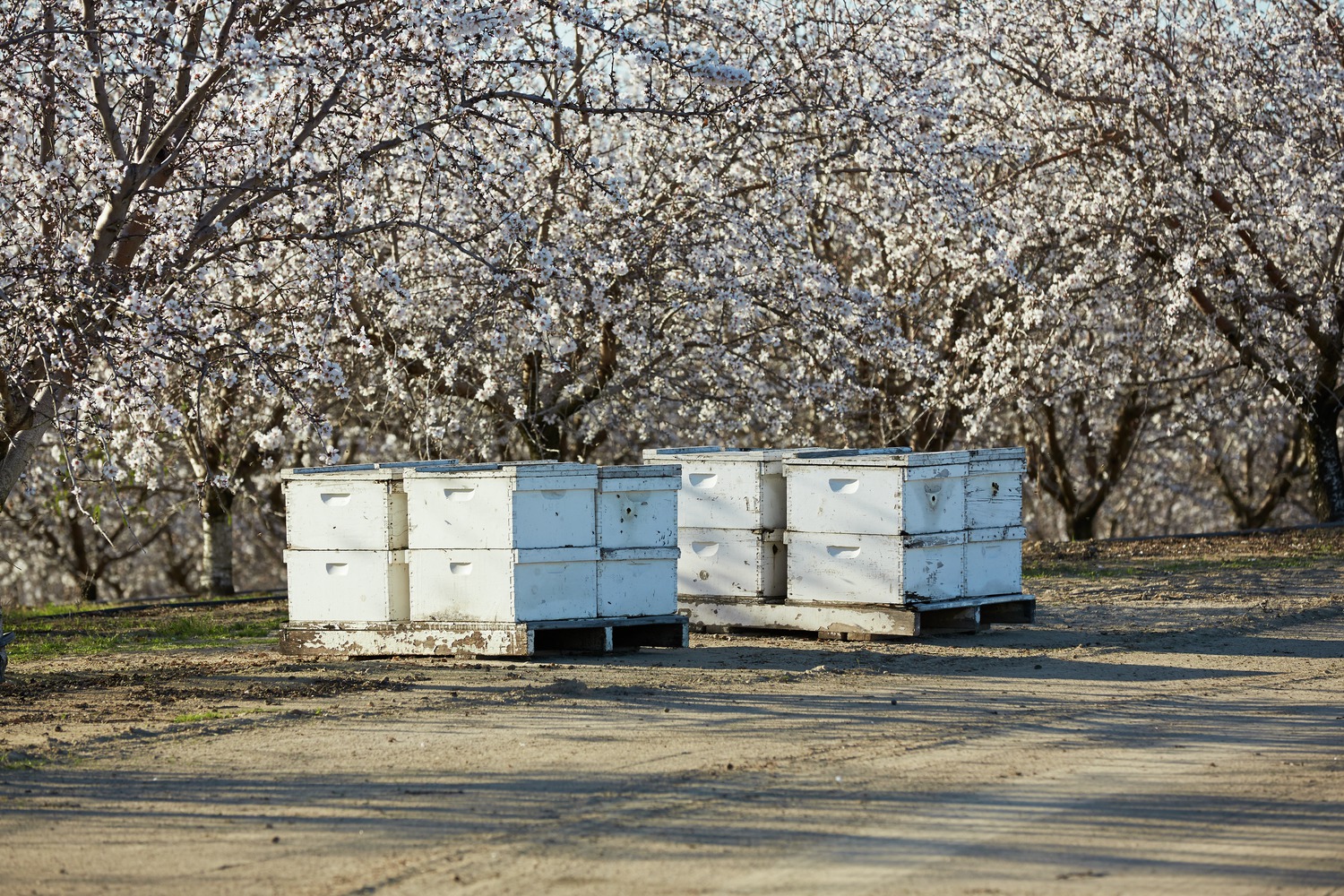Almond bloom is nearly here, and growers have much to consider during this key time of the season. Among the top of the checklist are pollination and disease management, two elements that must coexist to maximize benefits, both for the orchard and its honey bee visitors.
Balancing disease control and bee safety
Curbing disease during bloom helps promote a healthy orchard. Fungicides are customarily needed during this time, and Almond Board of California offers precautions to ensure both honey bee hive health and the best possible crop.
- Communicate: Grower and beekeeper should agree to a pesticide plan that outlines which pest control materials may be used. If a treatment is necessary, growers should inform beekeepers 48 hours in advance.
- Avoid applying insecticides, with the exception of Bacillus thuringiensis (Bt), during bloom. Ongoing research has shown that a number of insecticides labeled as safe for adult bees impact developing immature brood in the hive, especially if mixed with a fungicide.
- Read labels and follow directions: Fungicide labels contain directions for use related to bee safety, and “Bee Hazard” warnings are typically included in the Environmental Hazards section or in a specific call-out.
- Mind the time: Any fungicide application deemed necessary during bloom should occur in the late afternoon or evening when bees and pollen are no longer present.
- Promote on-target application: It’s important not to spray hives with any pesticide application. Spray rig drivers should turn off nozzles when near hives.
- Growers should be cautious about adjuvants: Emerging research indicates additional adjuvants may negatively impact bee health. Most fungicides are formulated with adjuvants. Unless stated on the label, adding adjuvants do not improve fungicide efficacy.
- Provide a water source: This will ensure bees spend more time pollinating than searching for water. The water source (a bucket with burlap to provide a bee-landing platform) should be covered or removed before application or emptied and refilled after application.
- Report issues: Report suspected pesticide-related incidences to county ag commissioners. Bee health concerns cannot be addressed without data from potential incidents.
Additional considerations
A new ‘school rule’ that will impact bloom sprays took effect Jan. 1. It prohibits the application of any pesticide, either by airblast sprayer or by air, within a quarter-mile of public schools and licensed day care centers Monday through Friday between 6 a.m. and 6 p.m. The county ag commissioner office can advise which orchards are affected by the rule.
With proper planning, growers can effectively navigate pollination while protecting orchards and honey bees. For the comprehensive set of Honey Bee Best Management Practices (BMPs), the grower quick guide and applicator/driver quick guide, visit Almonds.com/BeeBMPs.